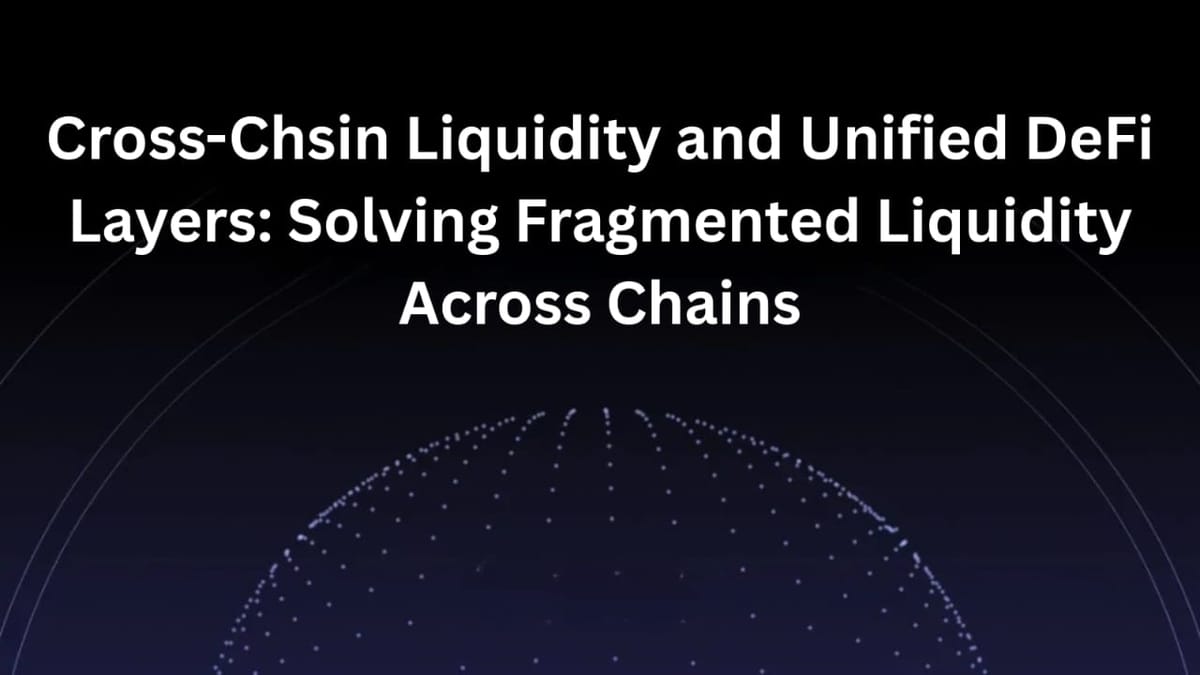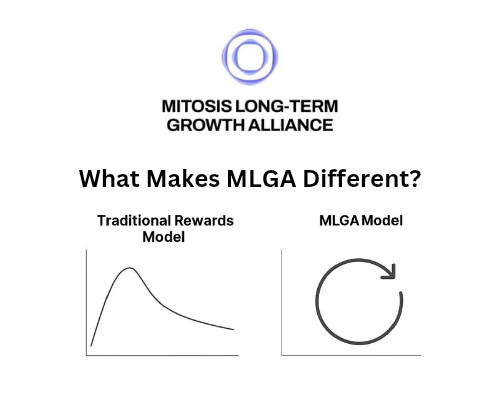Cross-Chain Liquidity and Unified DeFi Layers: Solving Fragmented Liquidity Across Chains

Introduction
The decentralized finance (DeFi) landscape has witnessed explosive growth over the past few years, with numerous protocols and platforms emerging to facilitate various financial services without intermediaries. However, one of the most significant challenges facing the DeFi ecosystem is liquidity fragmentation. As multiple blockchain networks have developed their own ecosystems, liquidity has become dispersed across these chains, leading to inefficiencies and barriers to seamless asset transfers. This article delves into the concept of cross-chain liquidity and unified DeFi layers, exploring how protocols are addressing fragmented liquidity through innovative solutions such as Layer 0 messaging, canonical bridges, and liquidity hubs.
1. Understanding Liquidity Fragmentation
1.1 What is Liquidity Fragmentation?
Liquidity fragmentation occurs when liquidity is spread across multiple blockchain networks, making it difficult for users to access a unified pool of assets. Each blockchain operates independently, creating isolated ecosystems that compete for liquidity. This fragmentation can lead to several issues:
- Increased Costs: Users may face higher transaction fees and slippage when trading assets across different chains.
- Inefficiencies: The inability to access a consolidated liquidity pool can result in suboptimal trading conditions.
- Security Risks: Traditional cross-chain bridges have been vulnerable to hacks, leading to significant financial losses.
1.2 The Importance of Cross-Chain Liquidity
Cross-chain liquidity is essential for the growth and sustainability of the DeFi ecosystem. It enables users to move assets seamlessly between different blockchains, enhancing trading efficiency and reducing costs. By addressing liquidity fragmentation, cross-chain solutions can unlock new opportunities for users, developers, and liquidity providers.
2. Solutions to Fragmented Liquidity
1.2 Layer 0 Messaging
Layer 0 messaging protocols facilitate communication between different blockchains, allowing for more efficient asset transfers without relying on traditional bridges. These protocols enable interoperability by providing a framework for different chains to share information and liquidity.
2.1.1 How Layer 0 Works
Layer 0 protocols operate beneath Layer 1 blockchains, creating a foundation for interoperability. They allow different blockchains to communicate and share data, enabling seamless asset transfers. This approach eliminates the need for complex bridging mechanisms, reducing the risk of hacks and improving user experience.
2.1.2 Examples of Layer 0 Protocols
- Polkadot: Polkadot is a multi-chain framework that allows different blockchains to interoperate and share security. Its unique architecture enables parachains to communicate with each other, facilitating cross-chain liquidity.
- Cosmos: Cosmos employs the Inter-Blockchain Communication (IBC) protocol, which allows different blockchains to exchange data and assets securely. This enables a more interconnected DeFi ecosystem.
2.2 Canonical Bridges
Canonical bridges are standardized bridges that provide a secure and efficient way to transfer assets across chains. These bridges reduce the risk of hacks and improve user experience by offering a reliable method for cross-chain transactions.
2.2.1 How Canonical Bridges Work
Canonical bridges operate by locking assets on the source chain and minting equivalent tokens on the destination chain. This process ensures that the total supply of assets remains constant while allowing users to access their funds on different chains.
2.2.2 Advantages of Canonical Bridges
- Security: By using a standardized approach, canonical bridges minimize the risk of vulnerabilities that can be exploited by malicious actors.
- Efficiency: These bridges streamline the asset transfer process, reducing transaction times and costs for users.
2.2.3 Notable Canonical Bridges
- Wormhole: Wormhole is a cross-chain bridge that connects multiple blockchains, allowing users to transfer assets seamlessly. It employs a network of guardians to ensure the security of asset transfers.
- Avalanche Bridge: The Avalanche Bridge enables users to transfer assets between Ethereum and Avalanche, providing a fast and secure method for cross-chain transactions.
2.3 Liquidity Hubs
Liquidity hubs are centralized points where liquidity from multiple sources is aggregated, enabling users to access a larger pool of assets and better trading conditions. These hubs play a crucial role in unifying liquidity across different chains.
2.3.1 How Liquidity Hubs Function
Liquidity hubs aggregate liquidity from various decentralized exchanges (DEXs) and liquidity pools, allowing users to access the best prices and lowest slippage for their trades. By consolidating liquidity, these hubs enhance the overall trading experience for users.
2.3.2 Benefits of Liquidity Hubs
- Improved Pricing: By accessing a larger pool of liquidity, users can benefit from better pricing and reduced slippage during trades.
- Increased Capital Efficiency: Liquidity hubs enable liquidity providers to earn rewards from multiple sources, enhancing their capital efficiency.
2.3.3 Examples of Liquidity Hubs
- 1inch: 1inch is a decentralized exchange aggregator that sources liquidity from various DEXs, allowing users to find the best prices for their trades.
- Thorchain: Thorchain is a cross-chain liquidity hub that enables users to swap assets across different blockchains without relying on wrapped tokens.
3. Key Innovations in Cross-Chain Liquidity
3.1 Interliquidity Models
Interliquidity models are designed to create a mesh of sovereign rollups and major Layer 1 blockchains, allowing for shared liquidity from inception. These models enable new rollups to access deep liquidity pools immediately, reducing the costs associated with bootstrapping liquidity.
3.1.1 How Interliquidity Works
Interliquidity models leverage the concept of shared liquidity, where multiple chains can access a common pool of assets. This approach allows for more efficient capital allocation and reduces the need for duplicated incentive programs across different chains.
3.2 Proof of Liquidity (PoL)
Proof of Liquidity (PoL) is a consensus mechanism that incentivizes liquidity provision and aligns the interests of validators, protocols, and liquidity providers. By rewarding participants for providing liquidity, PoL encourages greater participation in the DeFi ecosystem.
3.2.1 Benefits of PoL
- Incentivized Participation: PoL rewards liquidity providers for their contributions, ensuring that liquidity remains available for users.
- Alignment of Interests: By aligning the interests of all participants, PoL fosters a more sustainable and efficient DeFi ecosystem.
3.3 Data Availability Layers
Innovations in data availability, such as off-chain blob storage, enhance the speed and efficiency of cross-chain transactions. These layers ensure that data is readily accessible, allowing for faster and more secure asset transfers.
3.3.1 Importance of Data Availability
Data availability is crucial for the functioning of cross-chain protocols. By ensuring that data is accessible and verifiable, these layers enhance the security and efficiency of cross-chain transactions.
4. Real-World Applications and Benefits
1. For Developers
New rollups can access deep liquidity pools immediately, reducing the costs associated with bootstrapping liquidity. This allows developers to focus on building innovative applications without worrying about liquidity constraints.
2. For Liquidity Providers
Enhanced capital efficiency and reduced impermanent loss through volume-based rewards are significant benefits for liquidity providers. By participating in cross-chain liquidity solutions, providers can maximize their returns while minimizing risks.
3. For End Users
Seamless cross-chain swaps with lower fees and better pricing due to unified liquidity pools enhance the overall user experience. Users can trade assets across different chains without facing the challenges of liquidity fragmentation.
5. Comparative Advantages Over Traditional Solutions
1. Security
Cross-chain liquidity solutions eliminate risks associated with bridge hacks and wrapped tokens. By employing standardized approaches and innovative protocols, these solutions enhance the overall security of asset transfers.
2. Efficiency
Shared liquidity across ecosystems reduces the need for duplicated incentive programs, allowing for more efficient capital allocation. This efficiency translates to lower costs and better trading conditions for users.
3. Governance
Unified governance through mechanisms like vRISE ensures that liquidity flows to the most productive projects. This approach fosters a more sustainable and efficient DeFi ecosystem, benefiting all participants.
6. Future Developments in Cross-Chain Liquidity
1. Integration with Major Blockchains
Ongoing efforts to connect with Ethereum, Solana, and other leading ecosystems aim to enhance liquidity sharing. By integrating with major blockchains, cross-chain liquidity solutions can unlock new opportunities for users and developers.
2. Modular Architecture
Modular architecture ensures adaptability to future blockchain innovations while maintaining interliquidity advantages. This flexibility allows protocols to evolve alongside the rapidly changing DeFi landscape.
3. Ecosystem Growth
Continuous onboarding of new projects and rollups to expand the liquidity network is essential for the growth of cross-chain liquidity solutions. As more projects join the ecosystem, the overall liquidity pool will increase, benefiting all participants.
Conclusion: The Future of Unified Liquidity
The evolution of cross-chain liquidity solutions represents a significant shift in how blockchain ecosystems manage and share liquidity. By addressing fragmentation through innovative protocols and technologies, the future of DeFi looks promising, with the potential for a deeply interconnected ecosystem where value flows as freely as information.
As the DeFi landscape continues to evolve, the importance of cross-chain liquidity will only grow. By leveraging solutions like Layer 0 messaging, canonical bridges, and liquidity hubs, the industry can overcome the challenges of liquidity fragmentation and create a more efficient and accessible financial ecosystem for all.
Resources for Further Reading
- Liquidity Aggregation in DeFi: Solving Fragmentation Across Chains
- Here's how to tackle DeFi fragmentation through unified liquidity
- Solving Liquidity Fragmentation in DeFi: Hyper-Bridges
- Cross-Chain Liquidity Explained
- Protocol for unifying cross-chain liquidity on Polkadot
- Interliquidity: Sunrise Layer's Solution to Liquidity Fragmentation
- Solving Liquidity Fragmentation with Soul Protocol
- What Is Liquidity Fragmentation and Why It's Killing DeFi

Comments ()